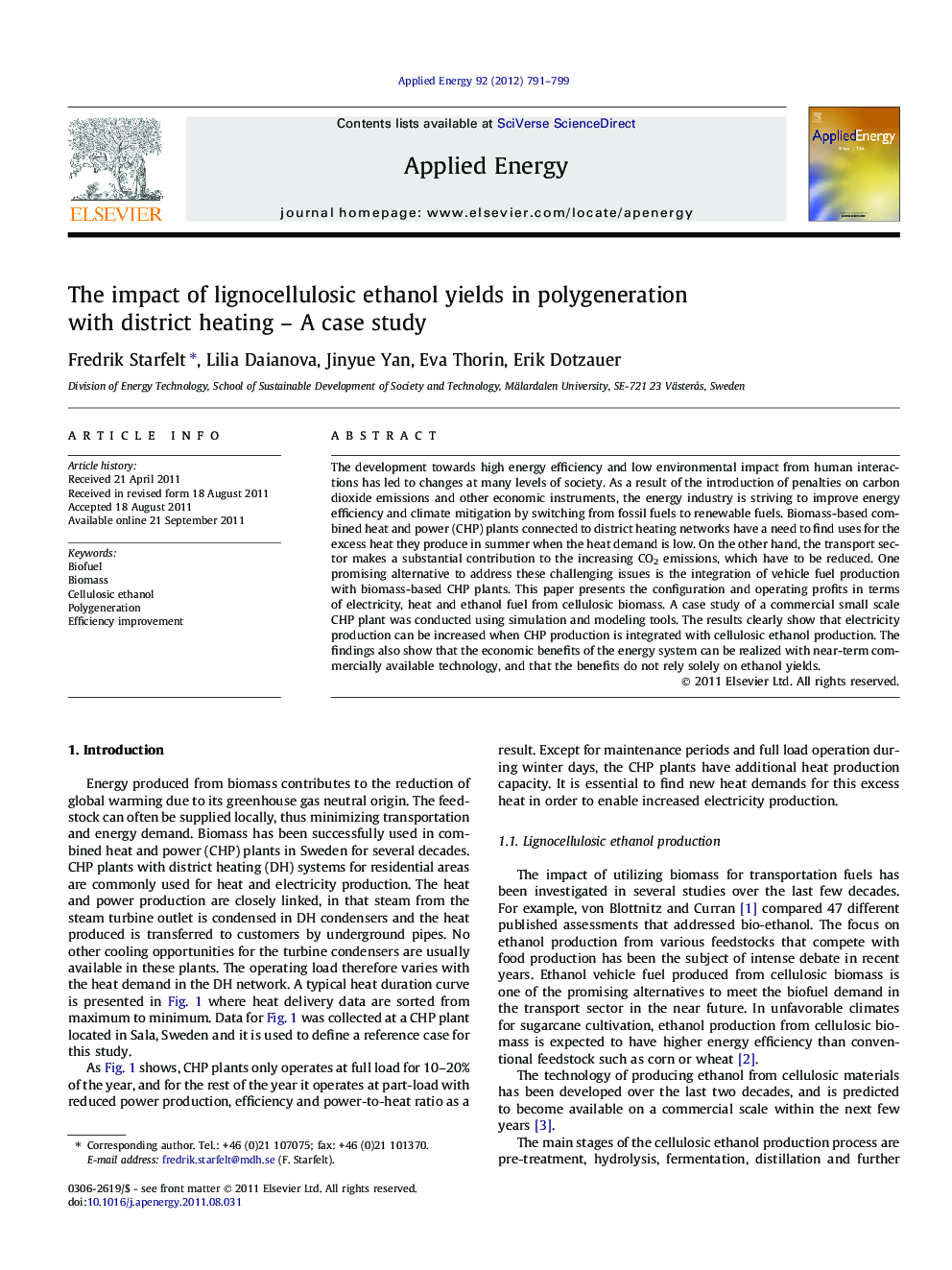| Article ID | Journal | Published Year | Pages | File Type |
|---|---|---|---|---|
| 243658 | Applied Energy | 2012 | 9 Pages |
The development towards high energy efficiency and low environmental impact from human interactions has led to changes at many levels of society. As a result of the introduction of penalties on carbon dioxide emissions and other economic instruments, the energy industry is striving to improve energy efficiency and climate mitigation by switching from fossil fuels to renewable fuels. Biomass-based combined heat and power (CHP) plants connected to district heating networks have a need to find uses for the excess heat they produce in summer when the heat demand is low. On the other hand, the transport sector makes a substantial contribution to the increasing CO2 emissions, which have to be reduced. One promising alternative to address these challenging issues is the integration of vehicle fuel production with biomass-based CHP plants. This paper presents the configuration and operating profits in terms of electricity, heat and ethanol fuel from cellulosic biomass. A case study of a commercial small scale CHP plant was conducted using simulation and modeling tools. The results clearly show that electricity production can be increased when CHP production is integrated with cellulosic ethanol production. The findings also show that the economic benefits of the energy system can be realized with near-term commercially available technology, and that the benefits do not rely solely on ethanol yields.
► We model a system with ethanol, power and district heating production. ► Different ethanol yields are investigated from an overall system perspective. ► Yields of ethanol production have less importance for the profitability of the plant.
